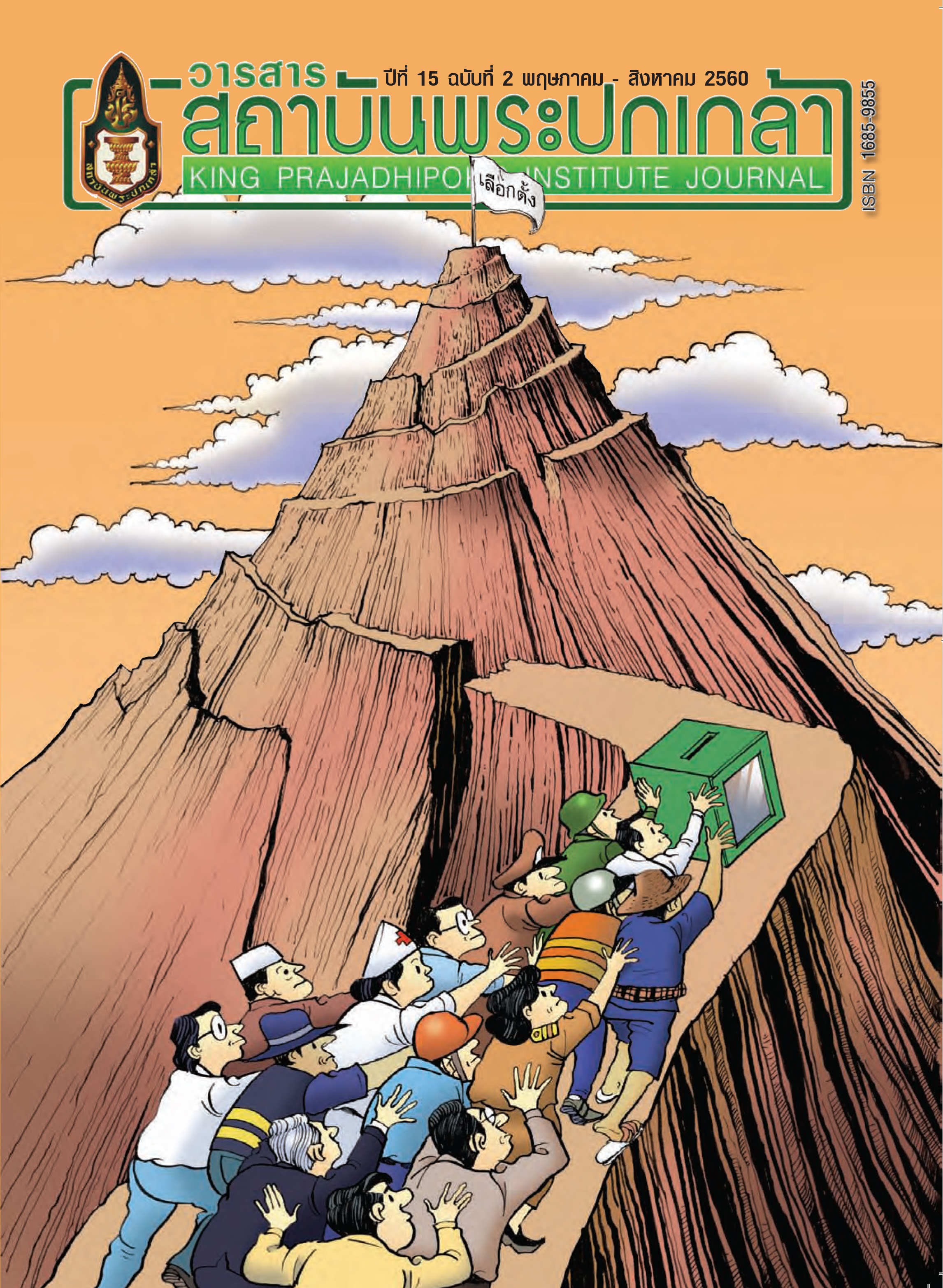Enterprise Risk Management (ERM) Integrated with Public Sector Management Quality Appraisal (PMQA) in the Department of Health, Ministry of Public Health
Main Article Content
Abstract
The purpose of this article is to study Enterprise Risk Management (ERM), Public Sector Management Quality Appraisal (PMQA) and how to integrate ERM and PMQA for efficiency and effectiveness in the Ministry of Public Health’s Department of Health. The study used quality research methodology for literature review and employed its findings to create a framework and study guideline. Phenomena analysis and empirical data were also used to verify the accuracy and validity of this study through in-depth interviews with executives and relevant personnel.
This study found that overall, ERM have efficient must comprises of following attributes: 1) determining internal environment of organization, 2) setting objectives, 3) identifying risk factors, 4) risk appraisal, 5) risk response, 6) risk control, 7) data management and communication, and 8) risk monitoring and evaluation. PMQA property emphasizes the followings: 1) leadership, 2) strategic planning, 3) customers and stakeholders, 4) measurement, analysis, and knowledge management, 5) human resources, and 6) process management. The development and integration of ERM and PMQA could lead to ensuring good corporate governance and high organizational competency.
The findings indicated that the Department of Health lacks systems for these management tools. This is evident because the department exercises ERM without policy and structure determining, without explicit risk management procedures in its activities, and without continuous risk communication. There was also a lack of synchronized managerial tools for risk identification, analysis, evaluation, response, risk control, and appropriate risk communication supported by integration with activities in PMQA.
Article Details
@ 2020 King Prajadhipok's Institute The Government Complex Commemorating All Right Reserved.
References
กรมอนามัย. (2551). คู่มือการประยุกต์ใช้ PMQA กรมอนามัย. กรุงเทพฯ : (ม.ป.พ.).
กรมอนามัย. (2553). รายงานสรุปผล การพัฒนาระบบราชการกรมอนามัย ปี 2547-2553. (2553). กรุงเทพฯ : กลุ่มพัฒนาระบบบริหาร กรมอนามัย.
กรมอนามัย. (2554). งานประจำปี 2558. (2558). กรุงเทพฯ : กรมอนามัย กระทรวงสาธารณสุข.
กรมอนามัย. (2558). รายงานผลการดำเนินงานตามแผนบริหารความเสี่ยง กรมอนามัย. (2554-2558). กรุงเทพฯ : โรงพิมพ์สำนักงานกิจการโรงพิมพ์องค์การสงเคราะห์ทหารผ่านศึก.
พสุ เดชะรินทร์. (2549). การพัฒนาองค์การให้มีขีดสมรรถนะสูง (High Performance Organization). ชุดเครื่องมือการเรียนรู้ด้วยตนเอง. กรุงเทพมหานคร: สำนักงานคณะกรรมการพัฒนาระบบ ราชการ.
มโนชัย สุดจิตร. (2552). คู่มือการบริหารความเสี่ยงทั่วทั้งองค์กรสำหรับพนักงาน ธ.ก.ส.. กรุงเทพฯ : ธนาคารเพื่อการเกษตรและสหกรณ์การเกษตร (ธ.ก.ส.).
มโนชัย สุดจิตร. (2557). การนำระบบการบริหารความเสี่ยงทั่วทั้งองค์การ มาสนับสนุน ประสิทธิผลการดำเนินงานในสถาบันการเงินเฉพาะกิจ ศึกษากรณีธนาคารเพื่อการเกษตรและสหกรณ์การเกษตร (ธ.ก.ส) (2557). ดุษฎีนิพนธ์รัฐประศาสนศาสตร์ วิทยาการนวัตกรรมการจัดการ, มหาวิทยาลัยเทคโนโลยีราชมงคลรัตนโกสินทร์.
สำนักงานคณะกรรมการพัฒนาระบบราชการ (ก.พ.ร.). (2554). คู่มือคำอธิบายตัวชี้วัด การพัฒนาคุณภาพการบริหารจัดการภาครัฐ ปีงบประมาณ 2554. กรุงเทพฯ : บริษัท วิชั่น พริ้นท์ แอนด์ มีเดีย จำกัด.
สำนักงานคณะกรรมการพัฒนาระบบราชการ (ก.พ.ร.). (2558). เกณฑ์คุณภาพการบริหารจัดการภาครัฐ พ.ศ. 2558. บริษัท วิชั่น พริ้นท์แอนด์ มีเดีย จำกัด. กรุงเทพฯ.
สุนทร พูนพิพัฒน์. (2542). รูปแบบและการประยุกต์ใช้ TQM สำหรับสถานศึกษา. วารสาร For Quality. (ฉบับเดือนมีนาคม – เมษายน 2542) ไม่ระบุโรงพิมพ์. กรุงเทพฯ.
Anderson, K., & Terp, A., (2006). Strategic risk management practice: How to deal effectively. Cambridge, UK: Cambridge University press.
Beasley, Mark S., (2006). The Impact of enterprise risk management on the internal audit function. North Carolina, USA: The enterprise risk management Initiative division North Carolina State University.
Berg, H. Peter. (2010). “Risk management: Procedures, method and experiences”. Rtrevino creative marketing (RT&A). 2 (17), 79-95.
Committee of Sponsoring Organizations of the Treadway Commission (COSO). (2004). COSO: Enterprise risk management-integrated framework. n.p.: COSO, Advisory Council.
Crockford, G.N., (1982). “The bibliography and history of risk management”. The Geneva paper on Risk and Insurance. 7 (23), 169-179.
Derrocks, VC., (2010). Risk management and value creation. (Doctoral dissertation in Business Administration), The Business School of Nelson Mandela Metropolitan University (NMMU), Port Elizabeth, Republic of South Africa.
International Organization for Standardization (ISO) 31000. (2009). Risk management principles and guidelines on Implementation. Geneva Switzerland: ISO. Customer Service.
Kimbrough, R.L., & Paul, J. Componation. (2009). “Relationship between organizational culture and enterprise risk management”. Engineering Management Journal. 4, 45-78.
Lam, Jam. (2001). Enterprise risk management: Incentives and control. San Francisco, USA: Wiley press.
Steinberg, Richard M., (2004). Enterprise risk management- integrated framework executive summary. New York: COSO advisory.


